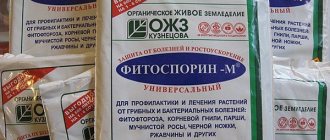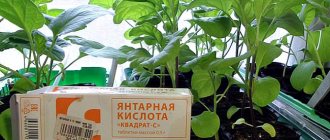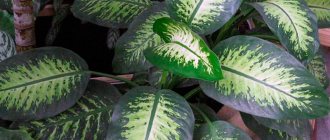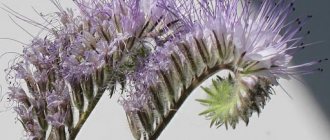In order for indoor plants to delight you with their beauty, create comfort in your home and saturate the air with oxygen, you need to take care of them. High-quality soil for flowers is one of the conditions for their growth and health. It is from the soil that plants take nutrients, but at the same time, if the soil is not of good quality, infection occurs from it.
For indoor flowers, it is better to buy ready-made soils, but even these are best disinfected before planting. Because the soil may be contaminated with fungus, mold, insect larvae or contain weed seeds. It is better to carry out sterilization in advance so that the beneficial flora has time to recover.
Preparing the soil for replanting indoor plants
Plants in their natural conditions and open ground do not always need fertilizers and fertilizing. They have a large amount of land at their disposal, which is restored naturally.
At home, they only have a pot of soil at their disposal. Such a small volume must be supplied with all the necessary substances. The soil must be moisture- and breathable, heat-conducting.
Before preparing the soil for planting or replanting a plant, be sure to read about what kind of soil is suitable for it.
The plant can love acidic or slightly acidic soil (for example, azalea, hydrangea, cyclamen). Orchids love soil with a high degree of breathability; the soil must contain leaf litter, or pieces of bark and moss.
For each plant you can now buy special soil in stores.
Universal soil
There are unpretentious plants that can be suitable for ordinary universal soil bought in a store. Such soil, as a rule, consists of peat with the addition of useful macro and microelements.
You can prepare the soil yourself. Usually this is peat, turf, leaf, coniferous soil or humus. The prepared soil is mixed with sand, pine needles and other components. The harvesting process is quite long, for example, leaf soil turns into compost within two years. If you have your own plot of land, preparing the soil on your own will not be difficult.
Calcination in the oven or microwave
Purchased or pre-prepared soil is poured onto a metal baking sheet in a layer up to 5 cm thick and poured with boiling water. You need enough water to slightly moisten the soil. After this, the baking sheet is placed in the oven and kept there at a temperature of 70-90 ° C for half an hour. Higher thermal exposure is unacceptable, as it will lead to mineralization of the soil, which will deteriorate its quality.
Heat treatment will destroy all pests and microorganisms. It should be carried out 1.5-2 weeks before sowing seeds for seedlings. After this, the earth is left at room temperature. In the time remaining before sowing, the soil microflora will be completely restored.
Instead of an oven, you can use a microwave oven for the procedure, reducing the processing time to 8 minutes (at medium power). The earth is first placed in a fabric bag and turned over once during the steaming process. If the volume of soil is small, calcination of the soil is carried out in 3–4 minutes at high power.
Soil disinfection
Before planting seedlings or replanting flowers, it is necessary to disinfect the soil for indoor plants. The fact is that the soil may contain seeds of weeds and other plants that we do not need. But it’s even worse if the soil was contaminated with fungus, microbes, mold spores or insect larvae.
Preparing the soil for seedlings. Mild soil disinfection.
To a greater extent, disinfection applies to soil prepared on our own. Purchased soil is most often already sterile and does not need to be processed.
Whitefly
It is a winged insect, usually not exceeding 3 mm in size. Its wings are covered with a white powdery coating. The larva of this pest has a yellowish color and red eyes. The transformation of a larva into an adult plant occurs in about 20 days. Whiteflies reproduce very quickly: the fertility of females can reach up to 280 pieces.
Harm caused
The whitefly settles on the lower part of the leaf. Adult insects and their larvae suck the juice from the tissues of flowers, thereby first causing it to wither and then completely die off the leaves. In addition, the sticky secretions covering the surface of the leaves become a favorable environment for the development of all kinds of fungal diseases.
Control measures
The whitefly is a flying pest, which greatly complicates the situation. The following ways to combat it are helpful:
- If the infestation is weak, insects and their larvae can be collected by hand. It is best to do this in the cool morning, while the pests are inhibited.
- Adult insects can be caught by hanging sticky fly traps near flowers. Frightened insects can also be easily collected with a vacuum cleaner.
- Since whiteflies love warmth and dryness, after collecting insects with your hands, you can wash the leaves of the plant with a warm soapy solution.
- The following method works well: the plant must be packaged in a transparent plastic bag, tied at the base of the pot. Just first you need to thoroughly moisten the plant with a spray bottle.
- In case of severe damage, the plant is treated with insecticides: Fufanon, Decis, Actellik, Intavir.
Methods of soil disinfection
There are several ways to disinfect soil, but you need to remember that in all types of disinfection, be it chemicals or folk remedies, the beneficial microflora of the soil also suffers.
Freezing
Freezing is done as follows: the finished soil is taken out to the balcony in winter (preferably if the temperature is less than 15-20 degrees) and left there for 2 weeks until it freezes. Then it is brought into a warm place until it thaws. This is necessary to awaken insects, larvae and plant seeds sleeping in the ground. After warming up, we take the soil out into the cold again. This can be done two or three times; at low temperatures, insects and plant seeds die.
This method cannot get rid of all diseases (for example, late blight, clubroot), but is effective against insects and plant seeds.
Calcination and sterilization
Calcination of soil in a furnace
Set the oven to preheat to 80-90 degrees (at higher temperatures the soil will deteriorate). At this time, put foil or baking paper on a baking sheet, pour the prepared soil onto it, pour boiling water over it well and put it in the oven for 30 minutes to calcine the soil. After the earth has cooled a little, pour the calcined soil into a container, level it in a small layer (maximum 10 cm) and leave it to saturate with oxygen.
This method is capable of disinfecting the soil from all diseases and pests. The soil is enriched with oxygen and moisture.
Steaming in a water bath
Steaming the soil
The soil is poured into a colander onto double-folded gauze and placed over a pan of boiling water... The bottom of the colander should not come into contact with the water. The earth needs to be stirred constantly to heat it evenly for an hour and a half.
This method is also able to get rid of all diseases and pests, in addition, the soil is saturated with moisture.
Etching
Soil dressing involves introducing into it substances whose vapors are poisonous to insects and larvae in it. This method is dangerous for humans, since the injected substances are poisonous and maximum safety measures must be observed (carbon disulfide, cyanide compounds, chloropicrin, copper sulfate). These methods can be used in open ground on a garden or farm scale, but not for indoor plants.
4 ways to disinfect soil for planting seedlings
Classification
The classification of drugs is very arbitrary, because the same fungicide can exhibit different characteristics on different plants. These features depend on the pathogens themselves, on the phase of their development, as well as on the amount and concentration of the agent used. So, fungicides are divided into groups.
Action on the pathogen
Based on their selectivity of action on pathogens, fungicides are distinguished:
- Effective preparations to combat powdery mildew fungi.
- Effective remedies against powdery mildew fungi.
Drugs in this group effectively destroy many other pathogens.
Nature of interaction
There are three main divisions here:
- True fungicides . Toxic to fungi and outside plants. They act directly at the cellular level.
- Pseudofungicides . Non-toxic outside plants. They influence the pathogenesis of the disease when the pathogen gets inside.
- Microbial antagonists . Preparations of biological origin. Stimulates plant immunity.
Distribution pattern within plant tissues
If we subdivide fungicides according to the nature of their distribution in plant tissues, we get the following:
- Contact . The effect of the drug occurs directly upon contact, without penetrating into the plant. Fungicides do not treat affected plants, but suppress pathogens that live on the surface or directly in plant tissue.
- System . The product penetrates the plant and moves inside it, detecting and destroying fungal spores. The exposure time of such drugs depends on the metabolic rate of the treated crop.
Purpose of application
According to the purpose of use, drugs are divided as follows:
- Seed disinfection . These drugs treat seeding material.
- Disinfectants for greenhouse soil.
- Preparations used during the growing season of plants . They save crops from diseases even during flowering.
- Products for treating perennials during the winter dormant period.
Before using fungicides, carefully read the instructions and strictly follow the proportions, concentration of the substance and all necessary safety measures!
Chemical soil disinfection
At home, strong chemical preparations should only be used as a last resort if biological fungicides cannot cope with the disease or pest.
Chemicals come in solid, liquid and gaseous forms. They are applied to the soil or sprayed from above. All drugs must be used with extreme caution; some of them can even corrode the skin or cause poisoning in humans.
Chemicals:
- Bordeaux mixture;
- copper oxychloride;
- oxychome;
- phytolavine;
- copper carbonate;
- formalin;
- sulfur;
- carbon disulphide.
Highly effective against all types of diseases and pests, kills all harmful and beneficial microflora, high toxicity class for humans, can harm already growing plants.
Chlorosis
Leaf chlorosis is a disease that occurs when there is a lack of zinc, manganese and iron in the substrate. Or due to a disrupted absorption process of these elements, mainly in soils with excessive liming.
When the disease is chlorosis, the lower leaves of plants turn yellow and die as a result (as a rule, only the leaf veins remain green). There is a slow development of all other plant organs: buds, leaves, stems, and root system.
In most cases, this plant disease is aggravated by poor drainage, high substrate moisture and a high content of nitrates in the soil mixture.
Land treatment after disinfection
After the soil is disinfected by calcination or steaming, it contains not only harmful, but also beneficial microflora, so the treated soil needs to be introduced with beneficial bacteria and microorganisms.
With the help of the fungicide Fitosporin - M, you can restore the beneficial properties of the soil. The drug contains the bacteria Bacillus subtilis, which restores the soil by multiplying in it and also destroys diseases. It is necessary to water the soil with the solution and wait for the bacteria to multiply; this takes several weeks.
On a note! Fitosporin is available in the form of powder, liquid and paste.
The drug must be diluted with water. The dosage is as follows:
- To prepare the soil for indoor plants, 5 grams per 10 liters of water will be enough.
- for the paste solution you need to take 15 drops per 1 liter of water.
- To dilute liquid Fitosporin, 10 drops per glass of water is enough.
Phytosporin can be used both for the prevention of plant diseases and for soil restoration. In addition, it is safe for animals and humans.
How to spray water for spraying
The quality of spraying depends on the size of the sprayed droplets. A simple sprayer that supplies water by pressing the handle of a hand pump has several modes of operation, but the particles of water that fly out of the holes are quite large and uneven. More modern models allow you to create a fine mist that lingers in the air much longer. When it gets on the leaves, its drops are quickly absorbed, and the residues easily evaporate without causing increased humidity on the shoots of plants.
It should be taken into account that when caring for indoor flowers, both spraying methods are used:
- A fine spray of water in the form of a mist is suitable for daily increasing the air humidity around the bush.
- Spraying larger drops is required for foliar feeding with fertilizer solutions and removing dirt and dust from the surface of leaves.
Watering with a strong solution of potassium permanganate
Spilling a pink solution of potassium permanganate is one of the easiest ways to disinfect the soil. Dissolve it in a proportion of three grams per ten liters of water. Spray the soil with this solution. Pots and seedling boxes are also treated with potassium permanganate.
Potassium permanganate solution
A quick and simple method, manganese after processing becomes a fertilizer, but this method is ineffective and is not able to completely sterilize the soil.
Disinfection of containers for planting
If you use last year’s containers for sowing and replanting, which you have already used for the same purposes, then it is highly recommended to disinfect them. This can be done, for example, using a solution of the same pharmacy hydrogen peroxide! Dilute 2-3 bottles (standard volume 100 ml) of pharmaceutical peroxide in a 1:1 ratio with warm tap water. Wash the containers thoroughly with this solution, then rinse them with clean water. Processing should only be carried out with protective gloves!
Help: Hydrogen peroxide has a universal antimicrobial effect. Gram-positive and gram-negative bacteria, viruses, and many types of pathogenic fungi are sensitive to it. Causes the death of spores of most sporogenic bacteria.
Photo: disinfection of containers for sowing
Which primers can be considered “proven Universal primers” in green bags, sold in Leroy Merlin. If the technology described above is followed - aeration, mixing, disinfection with peroxide, etc. this soil gives good results.
Photo: samples of soil packaging
Means for normalizing soil acidity
Soil acidity determinant or PH indicator - shows the amount of hydrogen ions in the soil. Soil acidity affects the uptake of water by roots and the absorption of nutrients. The neutral acidity indicator is PH -7. The lower the indicator, the more acidic the soil is.
| Soil classification | |
| very acidic soils | pH 3.8 - 4.0 |
| highly acidic soils | pH 4.1 - 4.5 |
| moderately acidic soils | pH 4.6 - 5.0 |
| slightly acidic soils | pH 5.1 - 5.5 |
| close to neutral soil | pH 5.6 - 6.9 |
Most often, indoor plants love neutral or slightly acidic soil, but there are many types of flowers that love more acidic soil (azalea, hydrangea, lupine).
Acid-base indicator
To determine the acidity of the soil, you can use litmus paper and a solution of soil in water; if the paper turns red, the soil is acidic; if it turns green, it is alkaline.
In highly acidic soil, plants lack nutrients, the work of all beneficial bacteria stops, and the plant quickly dies. Too alkaline soil is also not very good.
Ways to increase acidity:
- adding citric acid (0.5 tablespoon per 2.5 liters of water)
- adding malic acid (10 g per 1 liter of water)
- adding oxalic acid (1g per 2 liters of water)
- application of fertilizers (superphosphate, peat, sulfur sulfates)
Ways to reduce acidity:
You can reduce the acidity of the soil by adding chalk and special preparations and fertilizers containing calcium and magnesium (cement dust, slaked lime, ground limestone, fluff). They improve soil quality and normalize acidity. But all this does not happen immediately; lime works in the soil for several years.
Garden Pest Control
In addition to diseases, the flowers in our garden are threatened by various insect pests. The most common uninvited guests are:
- aphid;
- spider mite;
- wireworm;
- thrips.
Aphids and how to fight them
This small insect pest infects almost all flowering plants, settling in colonies on young tender leaves and shoots and sucking out the juice. As a result, the leaves curl and pathological growth of shoots and flowers is observed. There is no longer talk of any decorative effect; the plant needs to be saved.
How to destroy these small oval insects, 0.1-0.7 in size, that secrete honeydew, which attracts ants to flowers and carries viral plant diseases? When the first signs of aphids appear, you need to spray the flowers with such effective insecticides as “Bison” and “Tanrek”, “Alatpar” and “Biotplin”, “Fufanon” and “Aktpellik”, as well as “Inta-Vir” and various types of “Iskra” , acting in accordance with the instructions. If all insects cannot be destroyed, repeat spraying should be done after two weeks using a different preparation.
Insecticide against aphids and whiteflies Tanrek 12ml
Spider mite
The small tick, almost invisible to the naked eye, especially loves the combination of heat and low humidity. It settles on the underside of leaves, damaging them, entangling them with cobwebs, changing color to marble, then yellow. Then the leaves dry out and fall off prematurely. The tick - its adult females - overwinters well in the bark and fallen leaves. In the spring it begins to reproduce first on weeds, then moves on to flowers.
It is possible to protect flower beds from spider mites only with an integrated approach. It is necessary to constantly remove weeds from flower plantings and destroy plant remains from the diseased area. You can spray flowers against ticks with Fufanon and Iskra-M, which are especially effective in combating these pests. In extreme heat, use Tiovit Jet or colloidal sulfur, diluting the working solution at the rate of 40 g per half bucket of water. Processing is carried out every ten days.
Broad-spectrum insecticide Fufanon-Nova 2ml
Wireworm
This is the name given to the larvae of the click beetle, which develop in the ground and damage roots, flower bulbs, and chew through stems. Distributed in all regions. The larvae look like long yellow worms that are hard to the touch. Wireworms live in the ground, some even overwinter in the larval phase. Flowers affected by it either die or are severely behind in development compared to healthy plants. If 10-12 individuals live on every square meter, this poses a real threat to the flower garden.
To combat wireworms, you need to destroy weeds, especially their favorite wheatgrass, and treat the flower garden with effective preparations - “Provotox”, “Bazudin”, “Pochin” or “Zemlin” (consumption of only 10 g per 30 m2). If a flower bed of perennials is being planted, one of these preparations is mixed with sand and added to the grooves or holes for planting.
Insecticide against wireworms, cabbage flies, soil-dwelling pests Zemlin 100g
Thrips
Another type of insect pest, numerous, very small (from 0.5 to 3.0 mm), with an elongated body, most often choosing flowers for life. They suck juices from plants, damage stamens and pistils, interfering with the pollination process. Flowers lose their decorative qualities and do not produce viable seeds, their leaves take on an ugly appearance and become colorless. Adult thrips are able to fly to neighboring plants. They lay their eggs here, a generation of insects develops in two weeks, and they overwinter in plant debris or in the top layer of soil. Some of these insect species carry viral and bacterial diseases of cultivated plants grown in our gardens.
How to fight thrips, protecting your flower beds from them? First of all, be careful and start taking measures when you detect the first outbreaks where pests have appeared. Insects can be destroyed by spraying the affected plants with effective insecticides, the list of which is similar to those used to control aphids. The flower garden is treated every 8-10 days; it is recommended to alternate the preparations.
Prevention
To avoid the question of how to get rid of midges from indoor flowers, you need to follow simple rules.
Fallen, crumpled leaves and inflorescences should be removed in a timely manner, thereby keeping the soil clean. Rotting plant debris in the ground creates ideal conditions for insects to live. Proper watering guarantees the absence of insects in flower pots
It is important not to waterlog the soil, allowing it to dry out. You should not use tea leaves and similar organic matter as a top dressing. To prevent indoor midges from infesting flower soil, it should be steamed or frozen before use. The flowerpot itself must also be disinfected with boiling water or a manganese solution. Don't forget to loosen the soil regularly
This way it dries out better and is enriched with oxygen. To prevent the reproduction of midges in a flower pot, sprinkle the surface of the soil with coarse sand or marble chips. This will limit the ability of insects to lay eggs in the soil. Having discovered midges in a plant, it is necessary to treat all home plantings for preventive purposes, since in the early stages of infection it is not always possible to distinguish the affected specimen.
By following these simple rules, the question of what to do if you have midges will not arise. And flowers will respond to your love and care with beautiful blooms and lush growth.
Gommoz
Gommosis disease occurs in most cases in citrus fruits. The disease occurs when there is an excess of nitrogenous fertilizers, when the plant is planted deep in the substrate, due to excessive watering and heavy soil composition.
When gommosis occurs in a plant, brownish-red longitudinal spots appear on the bark of the trunk. Subsequently, the bark dies and a yellowish, sticky liquid called gum begins to flow out from under it, through cracks, and dries in the air.
The disease can occur without fluid leaking out; in this case, the stem bark becomes dry and does not lag behind the trunk at all, but cracks still form. The leaves of the plant become greenish-yellow, then completely turn yellow and fall off. The fruits of the plant are small.
Rotten
Rot often develops from excess moisture in low temperature conditions.
There are several types of rot.
Gray
Gray mold is caused by the fungus Botrytis cinerea Pers and infects areas of the plant that are dying. If conditions are created that are favorable for the development of rot, then a healthy plant may also be affected. Most often, crops with succulent foliage, such as begonia, Saintpaulia, gloxinia, etc., suffer from gray rot.
Its first signs: there is a loss of elasticity of the leaves, they become wilted and change their natural color. Brown spots of various shapes appear on them. Then the flowers and leaves become covered with light gray mold, become softened and subsequently die. When watering or spraying, spores from diseased plants can fall on healthy ones and infect them. Therefore, as a preventive measure, it is not recommended to place plants very closely together; it is necessary to frequently ventilate the room with plants and, if possible, prevent water from penetrating the foliage and flowers when watering.
The fight against gray mold includes:
- destroying all infected leaves, stems or flowers;
- organizing good lighting and thinning crops;
- treatment with topsin-M (0.1%), foundationazole (0.2%), a mixture of copper sulfate and soap. After 10 days, the plants must be re-treated.
White
White rot is caused by the fungus Sclerotinia sclerotiorum, which can affect different types of houseplants. White rot is expressed as rotting at the bottom of the stem and wilting at the top. At the bottom, the leaves become discolored and fill with water. Sometimes a ball of white plaque appears on them. If you cut the stem, you can see the sclerotia of the black fungus. In some cases they are visible on top of the stem. A sharp manifestation of the disease can occur with temperature changes or 12–15 degrees (subject to high humidity).
The diseased plant is removed along with the soil in which it grew.
Stem rot can occur under the influence of several factors:
careless division of the crop during transplantation; damage to roots by pests; abundant watering after excessive drying, as a result of which the root partially dies, and putrefactive organisms seep into the wounds; excessive fat content of soil mixtures.
Since the fungus parasitizes very quickly, you can try to save the plant only at the beginning of the disease by removing the affected areas. When the form is neglected, the flower is removed along with the soil.
Root rot
Root rot occurs in the root collar and eventually spreads to the entire root. The most
wounded plants that suffer from this serious disease are begonia, saintpaulia, dieffenbachia, cyclamen, palm. If there is root rot, then the leaves of the plants very quickly turn yellow and wither, soon become dark and die.
At an early stage, you can try to save the culture. It is necessary to remove it from the pot, rinse it and inspect the roots. Trim off rotten areas and the tops of stems. Then plant it in a new pot, changing the soil and watering it with carbendazim solution. Place the pot in a well-lit place, but without direct sunlight. Do not water until a new shoot has sprouted. Then watering must be carried out without allowing waterlogging.
https://youtube.com/watch?v=XamR5viTpb0











